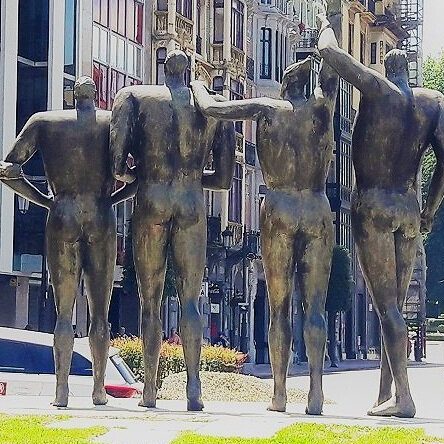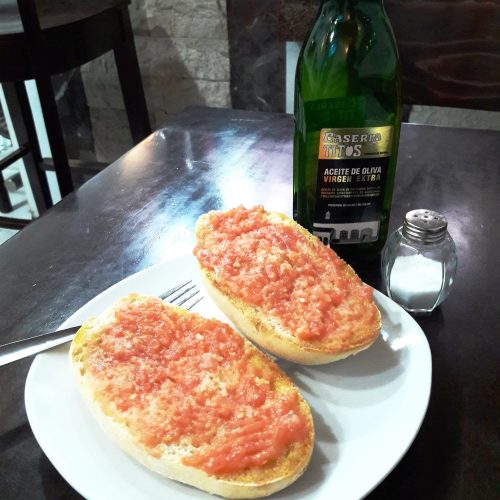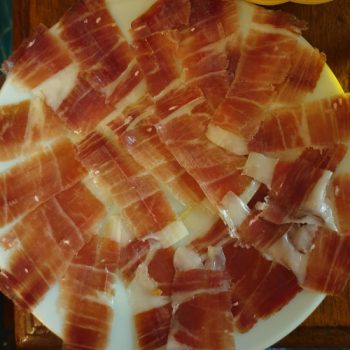
What You Need to Know About Oviedo
Oviedo, Asturias
An Overview

Although many foreigners were unfamiliar with Oviedo until it was featured in the Hollywood film Vicky Cristina Barcelona, this city is actually quite an important one to Spain. Today, Oviedo serves as the administrative and commercial capital of Asturias. However, the history of Oviedo is a long and winding one, dating back to a founding by two monks in the year 761.
Starting during the reign of King Alfonso I, kings were sent to the city of Oviedo with the intention of establishing it as the capital of the kingdom. Although King Alfonso I wanted Oviedo to be built up in the image of Visigothic Toledo, the architecture in Oviedo was done mostly in the Roman style and the city developed its own unique style.
 Today, the casco histórico (historic quarter) is a pedestrianized part of town that locals and tourists alike can enjoy wandering through. While the Catedral de San Salvador is one of the oldest and most emblematic landmarks in Oviedo, personally, it was the many sculptures that pop up unexpectedly throughout the city center that we most enjoyed.
Today, the casco histórico (historic quarter) is a pedestrianized part of town that locals and tourists alike can enjoy wandering through. While the Catedral de San Salvador is one of the oldest and most emblematic landmarks in Oviedo, personally, it was the many sculptures that pop up unexpectedly throughout the city center that we most enjoyed.
Despite its relatively small population of 220,020 (which doesn’t account for the university students), Oviedo is a lively city filled with beautiful plazas and parks, interesting museums, and delicious, filling food. It’s also located along the Camino de Santiago pilgrimage route so you may have the good fortune to coincide with a pilgrim while visiting and get to learn about this special Spanish experience.
Transport options to arrive: Plane, Train, Bus, or Car
When we visited, we personally arrived by car―which was very comfortable and grants you more freedom with your schedule―however the flights to Oviedo from within Spain are surprisingly inexpensive compared to other cities in the north. Depending on your time-constraints, this may be the most worthwhile option.
 Recommended time of year to visit and length of visit: It really depends on what you are looking for, but if you prefer sunny, warm days we recommend summer or early fall. Like most places in the north of Spain, rain is not uncommon in Oviedo, but from June to September, precipitation is at its lowest and temperatures are at their highest. Even so, this city doesn’t tend to experience any extreme temperatures, so even during the summer months an average high temperature is around 23º C (73º F), compared to the winter months in which highs are around 12º C (54º F).
Recommended time of year to visit and length of visit: It really depends on what you are looking for, but if you prefer sunny, warm days we recommend summer or early fall. Like most places in the north of Spain, rain is not uncommon in Oviedo, but from June to September, precipitation is at its lowest and temperatures are at their highest. Even so, this city doesn’t tend to experience any extreme temperatures, so even during the summer months an average high temperature is around 23º C (73º F), compared to the winter months in which highs are around 12º C (54º F).
We would recommend giving yourself at least two to three days to explore. Oviedo is a small enough city that you could see the main sites in one day, but there’s just so much charm and intrigue that you’re going to want more. When we visited, we sadly only had one night in the city but would have loved to stay for much longer.
Fun Fact: One of the main squares, Plaza de la Escandalera, has actually had many different names over the years. However, the current name dates back to the heated debates (escandaleras) that took place in the early 1800s following the construction of some of the first houses built on the corner of the square’s intersecting streets.
Top three must-sees:
1. La Catedral de Oviedo: Although the cathedral you see today is not the original one built in the 8th century, it was constructed in the same spot by King Fruela I, then continued by King Alfonso II. As such, you can appreciate its beautiful mixture of Gothic, Baroque, and other architectural styles. La cámara santa (the Holy Chamber) within the cathedral has been named a World UNESCO Heritage Site.
Pro-Tip: Be sure to capture a photo with the beautiful La Regenta statue in the foreground and the Cathedral in the background for a unique Oviedo shot.
 2. Plaza de la Escandalera and Parque Campo San Francisco: Essentially the heart of Oviedo, this square and park are home to some of Oviedo’s most famous sculptures. They’ll give you a representative taste of the ambiente (atmosphere) of the city and will whet your appetite for taking in more of the city. Enjoy an afternoon stroll through the green spaces of Campo San Francisco Park and even stop into the Biblioteca La Granja (The Farm Library) nestled within the park if it’s open.
2. Plaza de la Escandalera and Parque Campo San Francisco: Essentially the heart of Oviedo, this square and park are home to some of Oviedo’s most famous sculptures. They’ll give you a representative taste of the ambiente (atmosphere) of the city and will whet your appetite for taking in more of the city. Enjoy an afternoon stroll through the green spaces of Campo San Francisco Park and even stop into the Biblioteca La Granja (The Farm Library) nestled within the park if it’s open.
3. The eclectic assortment of sculptures: While impressive architecture is visible throughout the city, what really caught our tourist eyes was the wide range of styles represented in the large collection of sculptures (esculturas) sprinkled randomly along the streets and squares. You can look up the locations of these sculptures before you go to plan a guided tour such as this one that will ensure you see the most famous ones, but we would personally recommend just taking in the city naturally―it’s an unexpected treat each time you happen upon a new one and, truly, it’s not hard to do!
One thing to eat: Chorizo a la sidra
When in Asturias, one simply must experience the local homemade cider which is poured into your glass from a distance to create a fountain-style presentation. This cider, called sidra in Spanish, is definitely different from the sweet cider you may be used to drinking and is meant to be sipped in shot-sized amounts.
We always enjoy partaking in fun, local traditions like this one, but must admit that the taste was not exactly what we prefer when it comes to cider. What we did find delicious, however, were the sausages that are cooked in the cider, served in the broth and enjoyed like tapas.





